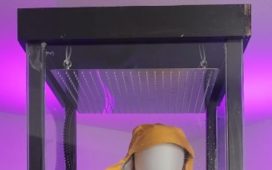[ad_1]
Antarctica is the Earth’s southernmost continent, located on the South Pole, where temperatures can be as low as -90C. Anywhere between 1,000 and 5,000 scientists reside there at various research facilities, carrying out their own experiments. In December 2016, following two years of thorough planning, five scientists in two submarines submerged into the unknown.
A deep channel off the northern tip of the Antarctic Peninsula, known as “Iceberg Alley” was selected for the dive and the BBC Blue Planet team went along with their cameras.
Previously, remotely operated vehicles (ROVs), had visited the depths of the Antarctic Ocean with initial findings suggesting that an abundance of life.
However, no one could have been prepared for the stunning finds uncovered during the documentary.
The series revealed a seabed crawling with life, including “ice dragon” fish, giant seas-spiders and swimming feather stars.
Dr Jon Copley, associate professor at the University of Southampton, was a driving force behind the exploration.
He said in July 2017: “Sending people a kilometre deep into the ocean around Antarctica for the first time shows that there is no longer any part of our blue planet that is inaccessible to us if we can find the will to go there.
“Unlike the harsh Antarctic conditions above the waves, the deep ocean here is a haven for life – thanks to almost 24-hour sunlight where we were diving, plankton bloom and krill feast on them, in turn ensuring plenty of food reaches the seafloor.
“The abundance of life down there is spectacular, with two-metre barrel sponges and giant sea-spiders with 40 cm leg spans.”
In addition to the marine life, the crew also filmed some remarkable species of fish that have also made this habitat home.
Dr Copley added: “One of my favourite fish that we saw was the ice dragon.
“It has clear blood without any of the oxygen-carrying haemoglobin that gives ours its red colour.
“In the cold water, enough oxygen dissolves directly in the fluid of the fish’s blood to keep it alive.
“On these dives, we watched the everyday lives of Antarctic deep-sea animals, helping us to understand them much better than studying specimens collected by nets or trawls from ships.”
[ad_2]
READ SOURCE













